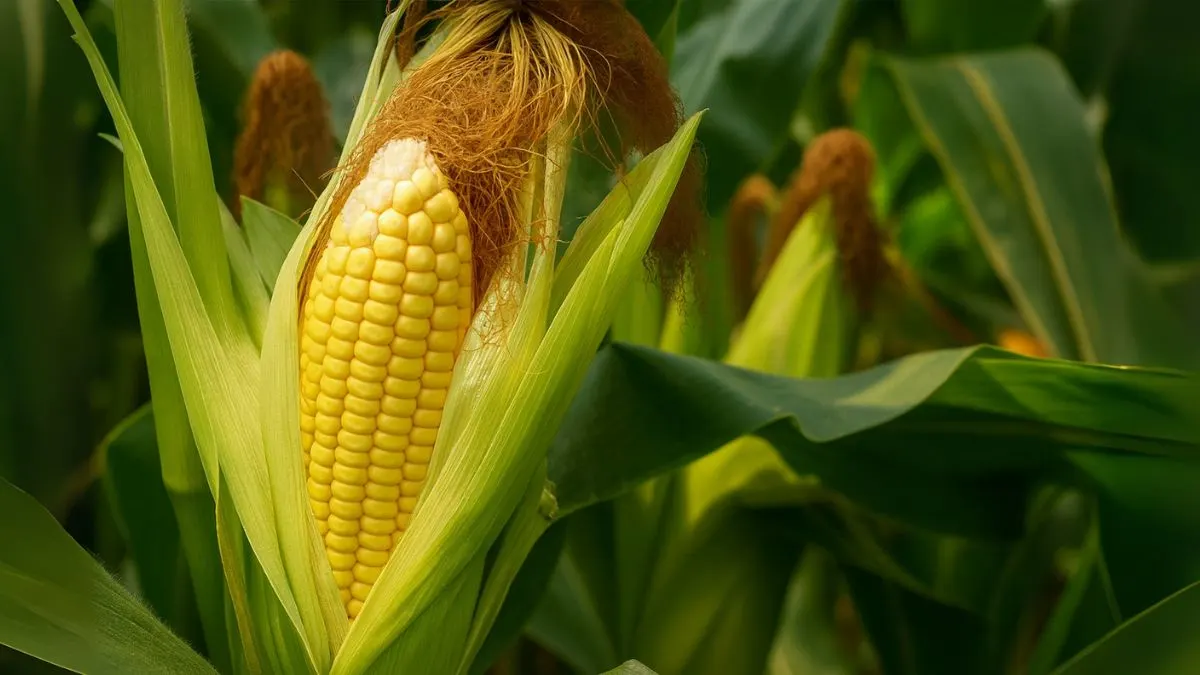Corn, also known as maize, is one of the most rewarding and iconic crops to grow in a home garden. From sweet, buttery cobs enjoyed at summer barbecues to dried kernels used in soups and homemade popcorn, corn offers both versatility and nutrition. Growing it at home is not only satisfying but also easier than many people think—provided you understand its specific needs.
In this article, I’ll share a step-by-step guide on how to grow corn in your garden, covering soil preparation, planting, watering, maintenance, and harvesting. I’ll also include my own experience to give you practical insights that can help you avoid beginner mistakes.
Why Grow Corn at Home?

- Freshly harvested corn tastes sweeter and juicier than store-bought options.
- Corn grows quickly, making it a rewarding crop for beginners.
- It can be grown in backyards, larger vegetable gardens, and even community plots.
- Provides multiple uses—fresh cobs, popcorn, flour, and animal feed.
- Fun for families, as kids enjoy watching tall corn stalks sway in the wind.
When I first grew corn in my garden, I was amazed at how quickly it shot up once the soil warmed. Within weeks, the plants had grown tall enough to give my garden a completely new look.
Choosing the Right Time to Plant
Timing is everything when it comes to corn.
- Await soil temperatures of 20°C for your first planting. Corn seeds won’t germinate well in cold soil.
- Plant out your seedlings or your ready grown plants in May in most temperate climates. This gives them a long, warm growing season.
- In Canada and the northern USA, wait until late spring when frost risk has passed.
- In warmer regions like India, corn can be grown multiple times a year, provided it has enough sun and warmth.
Also Read: How to Plant Apple Trees: A Beginner’s Step-by-Step Guide
Soil Requirements
Healthy soil makes for healthy corn. Corn is a heavy feeder, meaning it absorbs a lot of nutrients during its growing season.
- Choose well-drained, loamy soil.
- Enrich soil with compost or organic matter before planting.
- Ideal soil pH is between 6.0 and 6.8.
- Avoid compacted soil, as roots need to spread widely to support tall stalks.
From my experience, adding composted manure a week before planting gave my corn plants a head start, leading to fuller ears at harvest.
Planting Corn
The way you plant It has a big impact on its yield.
- Plant your seeds about an inch and a half deep, with about a foot’s distance between them.
- Instead of a single row, plant corn in blocks (multiple rows) to improve pollination. It is wind-pollinated, and block planting increases the chances of fuller kernels.
- Thin seedlings to 8–12 inches apart once they sprout.
- If transplanting, plant out your seedlings or your ready grown plants in May after soil warms.
Watering Guidelines
Corn loves consistent moisture.
- Water regularly, especially during the early growth stage and when cobs are forming.
- Deep watering 1–2 times a week is better than frequent light watering.
- Mulching around the base helps retain soil moisture and reduce weeds.
If you forget to water, the leaves quickly show stress by curling. I learned that a steady watering schedule is crucial for plump, juicy kernels.
Also Read: How to Grow Pumpkins for a Big, Festive Fall Harvest
Fertilizing and Care
It grows tall and needs plenty of nutrients.
- Apply nitrogen-rich fertilizer during the early stages of growth.
- Side-dress plants with compost or liquid fertilizer once they reach knee height.
- Keep weeds under control, as corn roots are shallow and can be outcompeted.
- Corn stalks may need support in windy areas.
Key Requirements for Growing Corn
Requirement |
Details |
Planting Depth |
Plant your seeds about an inch and a half deep, with about a foot’s distance between them |
Soil Temperature |
Await soil temperatures of 20°C for your first planting |
Planting Season |
Plant out your seedlings or your ready grown plants in May |
Soil Type |
Well-drained, loamy soil with compost |
Sunlight |
At least 6–8 hours of direct sunlight daily |
Watering |
Deep watering once or twice a week |
Fertilizer |
High-nitrogen feed during growth |
Common Challenges
- Poor Pollination: If planted in single rows, kernels may develop unevenly. Always plant in blocks.
- Pests: Corn borers, aphids, and cutworms can attack. Regular inspection is key.
- Diseases: Rust and blight may occur in humid conditions. Good spacing improves airflow and reduces risk.
- Nutrient Deficiency: Yellowing leaves often indicate nitrogen shortage. Use compost or organic fertilizer to fix it.
Also Read: Why You Should Grow a Pomegranate Plant in Your Garden
Harvesting Corn
- Corn is ready to harvest about 60–100 days after planting, depending on the variety.
- Check for readiness by feeling the cobs—kernels should feel plump and milky when pierced.
- Harvest in the morning when sugar content is highest.
- Consume immediately or refrigerate, as sweetness declines quickly after picking.
The first time I harvested homegrown corn, the taste was incomparable—juicier, fresher, and sweeter than anything I had bought from a market.
Growing corn in your garden is simpler than it looks. Whether you are gardening in India, Canada, or the USA, it is a fun and rewarding crop that transforms both your meals and your backyard.






